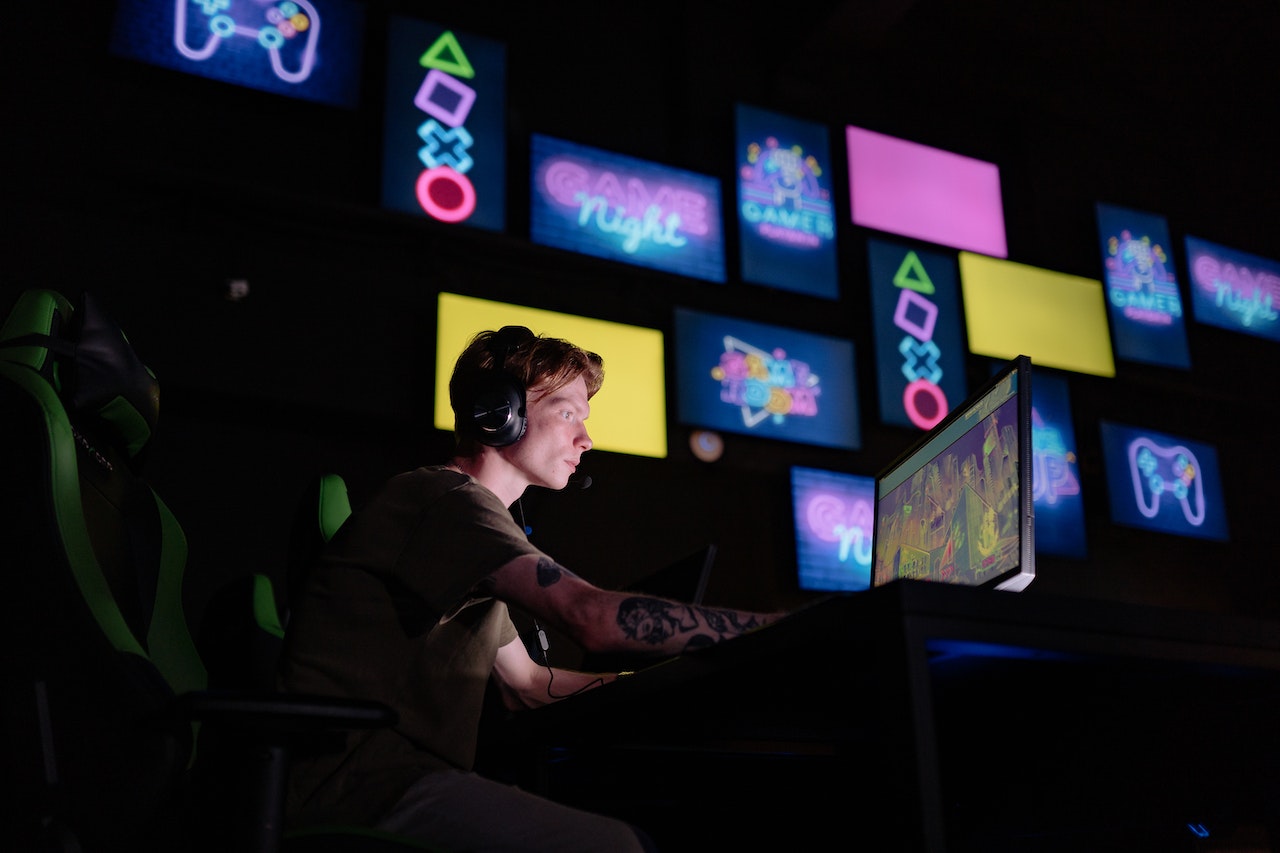
07 Mar Gain the Competitive Edge: Eye Tracking Revolutionizes Gaming
Welcome to the world of gaming, where every second counts and the smallest advantage can make a monumental difference. In this competitive landscape, players are constantly searching for innovative ways to gain an edge over their opponents. Enter eye-tracking technology, a revolutionary advancement that is transforming the way we play games. In this comprehensive guide, we will explore the wonders of eye tracking and its profound impact on the gaming industry.
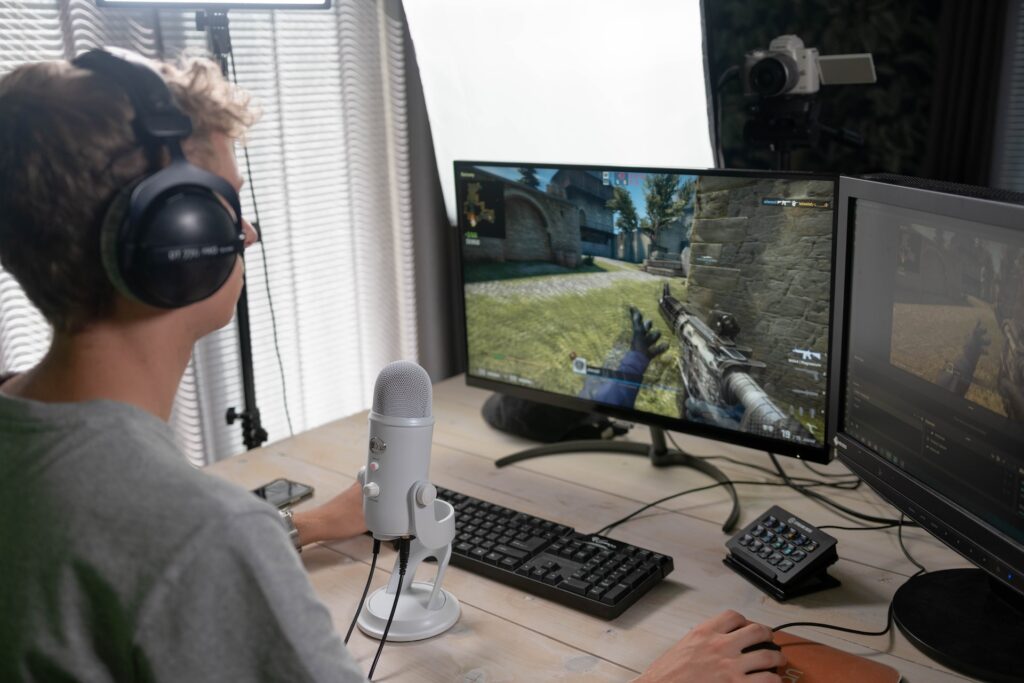
What Does Eye Tracking Do in Games?
Have you ever wondered how it would feel to have your gaming experience elevated to a whole new level of immersion? Eye-tracking technology can make that a reality. By precisely tracking the movement of your eyes, this technology allows games to respond dynamically to your gaze, unlocking a whole new dimension of interactivity.
Imagine a scenario where you are exploring a vast open-world game. With eye tracking, the in-game camera can seamlessly follow your gaze, giving you a more natural and immersive perspective. As you look around, the game world responds accordingly, adjusting the environment, triggering events, and even altering the behavior of non-player characters.
Eye tracking in games goes beyond mere visual enhancement. It can also be utilized to enhance gameplay mechanics. For instance, imagine playing a first-person shooter where your character’s aim is linked to your eye movements. By focusing your gaze on a target, your crosshair automatically aligns, giving you a more intuitive and precise way to aim. This level of precision can be a game-changer in competitive gaming, where split-second decisions can mean the difference between victory and defeat.
Can You Use an Eye Tracker to Aim?
Absolutely! One of the most exciting applications of eye-tracking technology in gaming is its ability to enhance aiming mechanics. Traditional input methods, such as using a mouse or a controller, require manual movement to adjust the aim. However, with an eye tracker, your eye movements can directly influence where your character is looking or aiming.
This feature opens up a world of possibilities for gamers, providing a more immersive and intuitive aiming experience. Imagine playing a first-person shooter and effortlessly taking down enemies simply by looking at them. Eye tracking enables this level of precision, allowing you to aim with incredible accuracy by aligning your gaze with the intended target. It eliminates the need for manual adjustments, making aiming feel more natural and responsive.
How Do Streamers Use Eye Tracking?
If you’re an avid viewer of gaming streams, you may have noticed some streamers using eye-tracking technology to engage their audience. Eye tracking adds a new layer of entertainment and interaction to the streaming experience. But how do streamers incorporate eye tracking into their live broadcasts?
The process is surprisingly straightforward. Streamers typically use specialized eye-tracking devices that can be easily integrated into their existing streaming setups. These devices, often in the form of compact webcams with built-in eye-tracking capabilities, are positioned near the streamer’s monitor to capture their eye movements.
Once the eye tracker is set up, streamers can overlay the eye-tracking data onto their live stream. This allows viewers to see exactly where the streamer is looking in real time. It adds a whole new level of engagement, as viewers can now follow the streamer’s gaze, understand their decision-making process, and get a glimpse into their strategies. Eye tracking creates an immersive and interactive viewing experience that keeps viewers hooked.
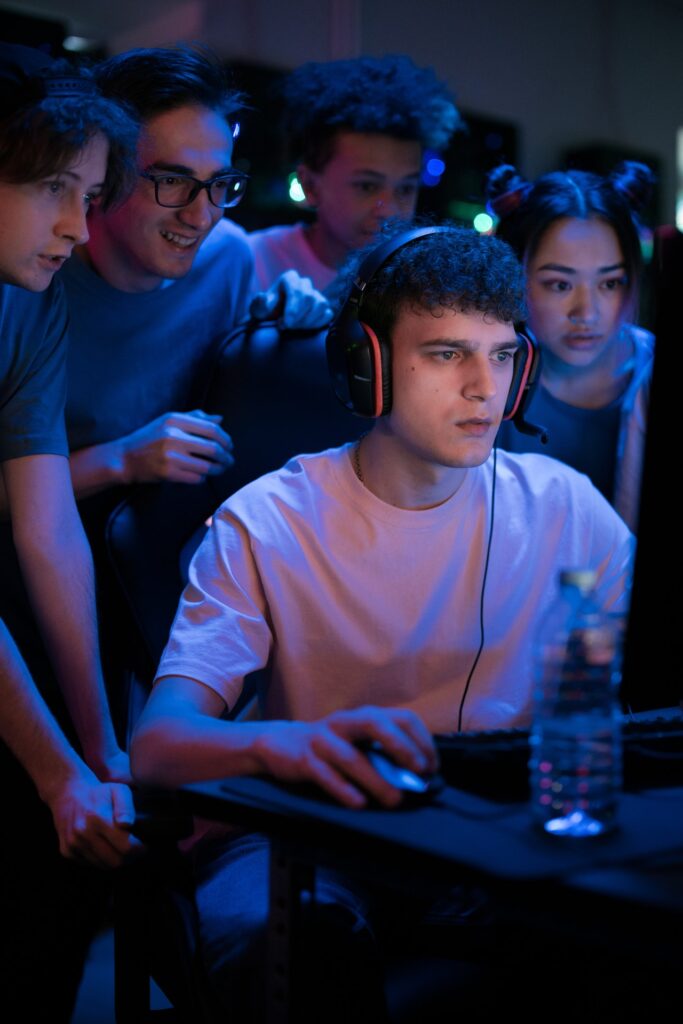
How to Use the Eye Tracker on a PC?
Now that you’re intrigued by the potential of eye-tracking technology, you might be wondering how to use an eye tracker on your PC. Fear not, as integrating an eye tracker into your gaming setup is easier than you might think.
The first step is to choose a compatible eye-tracking device. There are various options available on the market, ranging from dedicated eye-tracking hardware to software solutions that utilize your existing webcam. Once you’ve selected the device that suits your needs, follow these simple steps to set up the eye tracker on your PC:
- Connect the Eye Tracker: Depending on the device, connect it to your PC via USB or follow the manufacturer’s instructions.
- Install the Software: If your eye tracker requires software, download and install it from the manufacturer’s website.
- Calibrate the Eye Tracker: Launch the eye tracking software and follow the on-screen instructions to calibrate the device. This process ensures accurate tracking of your eye movements.
- Adjust the Settings: Depending on the software, you may have various settings to customize your eye-tracking experience. Explore the options and fine-tune them to your liking.
- Launch Your Game: Start your favorite game and enjoy the enhanced experience with eye tracking.
Remember that not all games support eye tracking out of the box. However, many popular titles have integrated eye-tracking functionality or provide mods that enable eye-tracking. Keep an eye out for games that specifically mention eye-tracking support to make the most of your new gaming accessory.
How Accurate is Eye Tracking?
When it comes to eye-tracking technology, accuracy is of utmost importance. After all, the effectiveness of eye tracking in games relies heavily on the precision and reliability of the eye tracker. So, just how accurate is eye tracking?
Modern eye tracking systems are remarkably accurate, with sub-millimeter precision. They utilize advanced algorithms and high-resolution cameras to track the subtlest movements of your eyes. This level of precision ensures that even the tiniest eye movements are detected and translated into meaningful interactions within the game.
However, it’s essential to note that the accuracy of eye tracking can vary depending on factors such as lighting conditions, head movements, and individual differences in eye characteristics. Factors like these can occasionally lead to minor inaccuracies or temporary tracking interruptions. Nevertheless, the overall accuracy of eye-tracking technology has reached a level where it can reliably enhance the gaming experience and provide valuable input for various applications.
Eye Tracking in Virtual Reality
Virtual Reality (VR) has revolutionized the way we experience games, transporting us into immersive digital worlds. And when combined with eye-tracking technology, VR becomes even more captivating and realistic.
In VR, eye tracking serves multiple purposes. Firstly, it enhances the feeling of presence by enabling more natural interactions with virtual environments. As you explore a VR world, your eye movements can trigger dynamic changes, such as objects reacting to your gaze or characters responding to your attention. This level of interactivity adds depth and realism to the virtual experience.
Secondly, eye tracking in VR can optimize performance. By accurately tracking your gaze, VR systems can allocate computational resources more efficiently. This technique, known as foveated rendering, focuses on high-resolution graphics only where you are looking, reducing the overall rendering load and improving performance. As a result, you can enjoy visually stunning VR experiences without straining your hardware.
Lastly, eye tracking in VR opens up new possibilities for social interactions. Imagine engaging in a multiplayer VR game where your eye movements can convey non-verbal cues to other players. Whether it’s making eye contact or signaling intentions, eye tracking adds an extra layer of communication and realism to virtual social interactions.
Eye Tracking Testing and UX Design
Eye-tracking technology isn’t just limited to enhancing gameplay mechanics. It also plays a crucial role in testing and optimizing user experience (UX) design in games.
Game developers and UX designers often conduct eye-tracking tests to gather valuable insights into how players perceive and interact with their games. By analyzing eye movement data, they can identify areas of interest, determine the effectiveness of visual cues, and make informed decisions to improve the overall user experience.
Eye tracking tests can reveal how players navigate game menus, where their attention is drawn during gameplay, and how they interact with various elements on the screen. This information helps developers understand player behavior, identify potential usability issues, and refine their designs accordingly. By incorporating eye-tracking data into the design process, games can be tailored to provide a more intuitive and engaging experience for players.
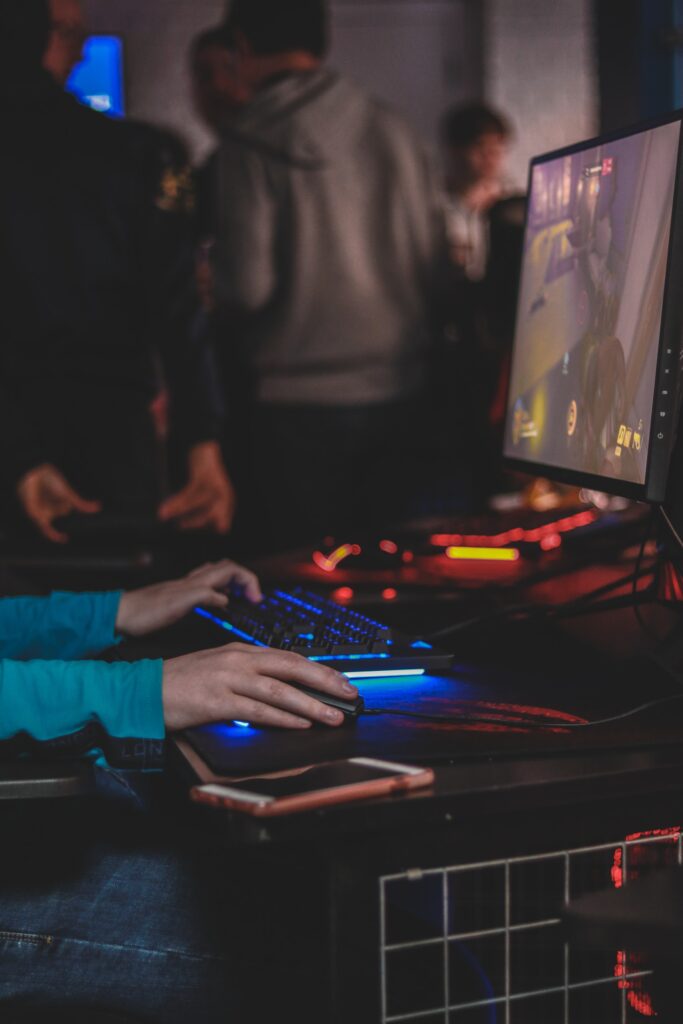
Eye Tracking Game: Unlocking New Possibilities
With eye-tracking technology becoming more accessible, game developers are exploring innovative ways to incorporate eye-tracking into their game mechanics. Eye-tracking games introduce entirely new gameplay experiences that rely on the precise tracking of your eye movements.
One exciting example is gaze-based puzzle-solving games. In these games, players must solve puzzles by using their gaze to interact with objects and trigger events. By looking at specific objects or areas, players can unlock hidden paths, reveal clues, or manipulate the environment in unique ways. Gaze-based puzzle games provide a refreshing and immersive twist on traditional puzzle-solving mechanics.
Another genre that benefits from eye tracking is horror games. Imagine playing a horror game where the intensity of the experience is directly tied to your fear and attention level. The game detects when you’re looking away or closing your eyes, and the environment responds accordingly, becoming more threatening or unpredictable. This dynamic adaptation based on your gaze creates a heightened sense of immersion and tension.
These examples merely scratch the surface of the creative possibilities that eye tracking brings to gaming. As developers continue to innovate, we can look forward to more unique and captivating gaming experiences that leverage the power of eye-tracking technology.
Eyeware Beam: A Review of Exceptional Eye Tracking Software
In the realm of eye-tracking software, one standout option that deserves recognition is Eyeware Beam. This powerful software harnesses the capabilities of eye-tracking technology to provide an exceptional user experience and unlock new insights.
Eyeware Beam offers a comprehensive set of features and functionalities that cater to a wide range of applications. From gaming and virtual reality to usability testing and market research, Eyeware Beam delivers accurate and detailed eye-tracking data that fuels meaningful analysis.
The software’s intuitive interface makes it accessible for both beginners and experts, ensuring a smooth and efficient workflow. The real-time gaze visualization allows users to observe eye movement patterns instantly, gaining valuable insights into user behavior.
Eyeware Tech offers robust analysis tools, enabling users to dive deep into eye-tracking data and extract meaningful metrics. With customizable visualizations, heatmaps, and gaze plots, users can analyze attention patterns, identify areas of interest, and make data-driven decisions to optimize their designs or products.
One notable aspect of Eyeware Beam is its compatibility with a wide range of eye-tracking devices, including both hardware-based and webcam-based solutions. This flexibility ensures that users can leverage their existing eye-tracking equipment or choose from various options that suit their needs and budget.
In summary, Eyeware Beam stands out as a top-tier eye-tracking software solution, providing accurate tracking, a user-friendly interface, and powerful analysis capabilities. Whether you’re a game developer, UX designer, or researcher, Eyeware Beam empowers you to unlock the full potential of eye tracking and gain valuable insights that drive innovation and improvement.
Check Also: “6 Predictions for the Future of AI in the Gaming Business“
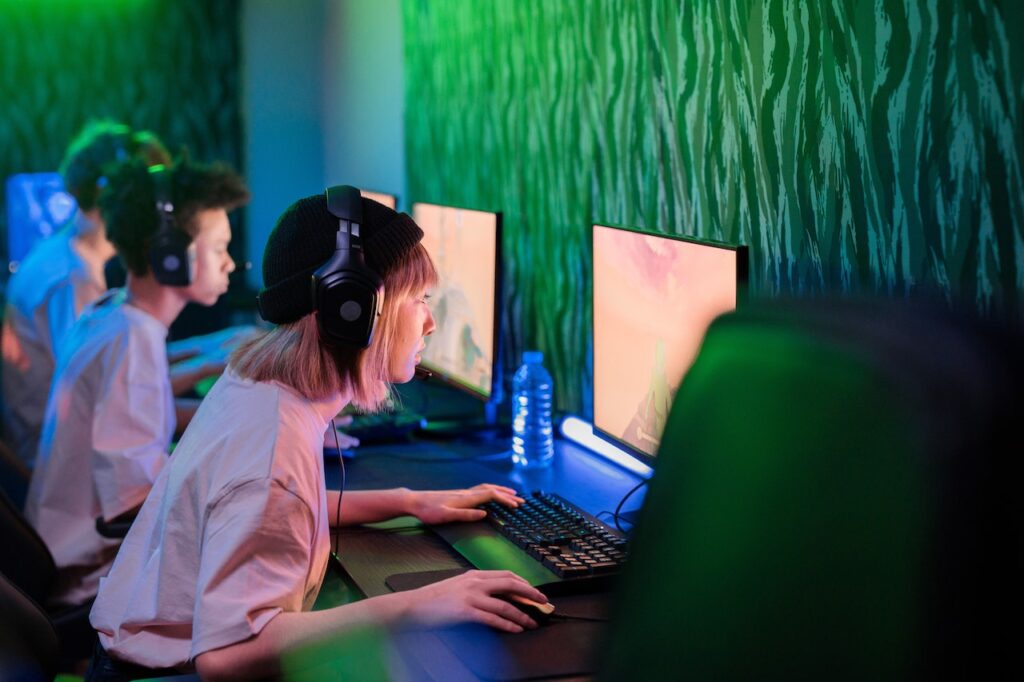
The Future of Eye Tracking in Gaming
As eye-tracking technology continues to advance, the future of gaming looks incredibly promising. With ongoing research and development, we can expect even more sophisticated applications and integration of eye tracking in games.
One area that holds immense potential is adaptive gameplay. Imagine a game that dynamically adjusts its difficulty based on your gaze patterns and skill level. By analyzing your eye movements, the game could adapt enemy behavior, puzzle complexity, or environmental challenges to provide a personalized and engaging experience tailored to your abilities.
Eye tracking also has the potential to revolutionize multiplayer gaming. Imagine playing a competitive online game where your opponents’ eye movements become visible to you. By analyzing their gaze patterns, you can gain insights into their strategies and make more informed decisions in real time. This level of information and interaction adds a new layer of depth to competitive gaming and raises the skill ceiling even higher.
Moreover, the integration of eye tracking with augmented reality (AR) and mixed reality (MR) opens up endless possibilities. Imagine a world where digital overlays seamlessly blend with the real environment and respond to your gaze. This integration can lead to immersive AR experiences where digital elements interact with your eye movements, creating a truly magical and interactive world.
The future also holds the potential for eye tracking to play a role in accessibility and inclusivity in gaming. By utilizing eye-tracking technology, games can provide alternative input methods for players with mobility limitations, allowing them to interact with the game world solely through their eye movements. This can significantly broaden the accessibility of gaming and provide equal opportunities for all individuals to enjoy the immersive experiences that games offer.
In conclusion, eye-tracking technology is revolutionizing the gaming industry. From enhancing immersion and aiming precision to enabling new gameplay mechanics and optimizing UX design, eye tracking opens up a world of possibilities. As technology continues to evolve, we can expect eye tracking to become an integral part of gaming experiences, providing players with a competitive edge and immersing them in captivating digital worlds.

